Mausoleum at Halicarnassus – The History of the Tomb of Mausolus
Where was the Mausoleum at Halicarnassus built and what was the Mausoleum at Halicarnassus built for? Counted one of the Seven Wonders of the Ancient World, the Tomb of Mausolus, was a monument erected at Halicarnassus for an Anatolian from Caria known as Mausolus, around the year 350 BCE. Pythius of Priene and Satyros, architects from Greece, created the Tomb of Mausolus. This article will explore everything there is to learn about the tomb, such as the Mausoleum at Halicarnassus’ statues, architecture, and history.
Table of Contents
An Exploration of the Mausoleum at Halicarnassus
| Architect | Satyros (c. 4th century BCE) Pythius of Priene (c. 4th century BCE) |
| Date Completed | 350 BCE |
| Function | Tomb of Mausolus |
| Location | Bodrum, Turkey |
The raised tomb construction of the Mausoleum at Halicarnassus is based on tombs from neighboring Lycia, which Mausolus attacked and captured in 360 BCE, for example, the Nereid Monument. The Tomb of Mausolus was roughly 45 meters tall and was ornamented on all sides with sculptural reliefs made by four Greek sculptors: Bryaxis, Leochares, Timotheus, and Scopas of Paros. The Tomb of Mausolus was regarded as such an artistic accomplishment that it was chosen as one of the Seven Wonders of the Ancient World. It was the most recent of the six ruined wonders to be destroyed by consecutive quakes from the 12th to the 15th centuries.
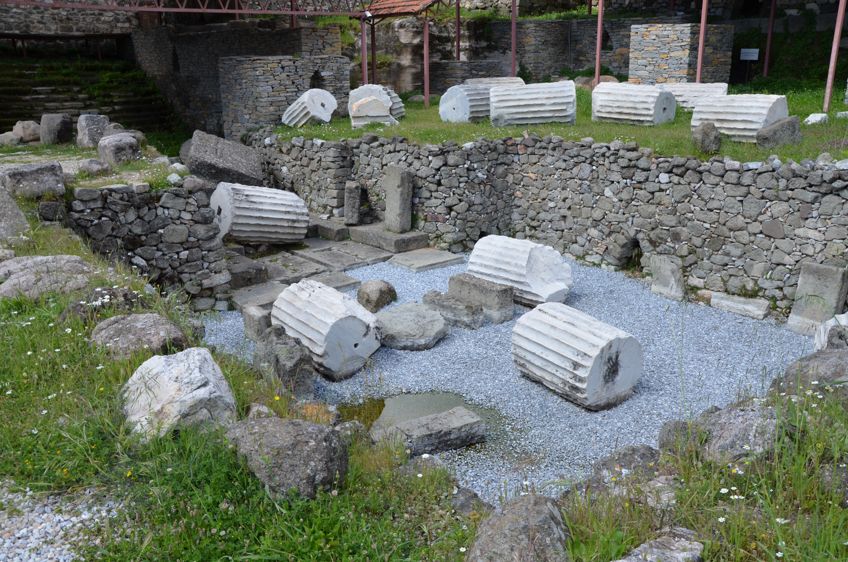
The Conquest of Halicarnassus
Halicarnassus was the center of a tiny provincial kingdom of Caria in the 4th century BCE. Hecatomnus of Milas, the formal monarch of the province, died in 377 BCE, leaving the power of the empire to Mausolus, his son. Hecatomnus, a local Persian dynasty, seized control of numerous adjacent cities and territories. He had several additional sons and daughters after Mausolus and Artemisia, including Idrieus, Ada, and Pixodarus.
Mausolus expanded his dominion all the way to Anatolia’s southwest coast, invading Lycia, famous for its numerous massive tombs such as the Tombs of Xanthos, from which he drew influence for his mausoleum.
For 24 years, Mausolus and Artemisia reigned over the surrounding region from Halicarnassus. Mausolus, although being of local heritage, spoke Greek and admired Greek culture and government. He established several Greek-style cities along the coastline and promoted Greek democratic values.
Mausolus intended to build a new capital that was both beautiful to look at and secure from invasion. He settled on the city of Halicarnassus. Artemisia and Mausolus poured enormous sums of tax money into beautifying the city. They commissioned glittering marble sculptures, temples, and structures. Mausolus passed away in 353 BCE, leaving Artemisia to govern alone. He had designed a monumental mausoleum for himself. When he passed, his siblings took on the task.
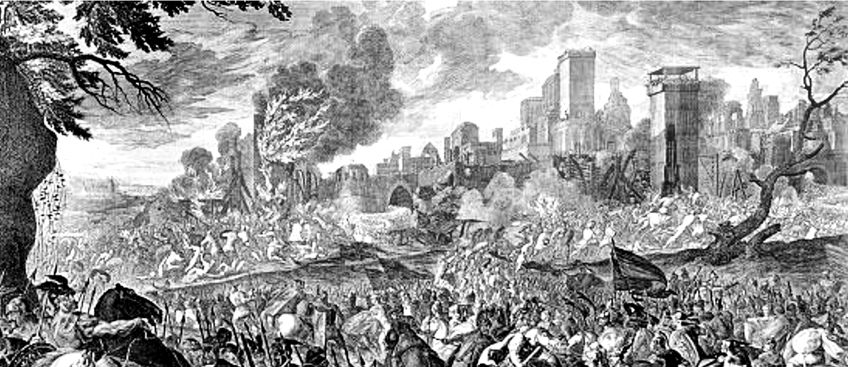
The Tomb of Mausolus became so well-known that the word mausoleum now refers to all majestic tombs. Two years after his death, Artemisia would pass away herself. The urns containing their remains were deposited in the still-unfinished tomb. The remains of a huge number of killed animals were laid on the staircase heading to the tomb as a type of sacrifice, and the stairway was subsequently covered with stones and debris, blocking access. According to Pliny the Elder, the artisans chose to remain and complete the work after their benefactor died, “seeing that it was both a legacy of his personal reputation and of the sculptor’s ability”.
The Construction of the Tomb of Mausolus
Mausolus most likely began planning the mausoleum before his demise, as part of the construction works at Halicarnassus, so that after he died, Artemisia could complete the building project. Artemisia spent no money on the tomb’s construction. She dispatched emissaries to Greece in search of the most outstanding craftsmen of their day. Scopas, the man in charge of the restoration of Ephesus’ Temple of Artemis, was among them.
The mausoleum was constructed on a hill with a view of the city. The entire structure was enclosed in a courtyard.
The tomb was positioned in the middle of the courtyard, atop a stone platform. A staircase flanked by stone lions ascended to the highest point of the platform, which had several sculptures of goddesses and gods along its outside walls. Stone soldiers on horses defended the tomb at each side. The tomb ascended as a square tapered slab to one-third of the Mausoleum’s 45-meter height in the middle of the platform. This part was decorated with bas-reliefs depicting action scenarios, such as a battle between centaurs and Lapiths, and Greeks battling the Amazons, a tribe of warrior women.

There were 36 thin columns, ten on each side, which rose for an additional third of the tomb’s height on top of this part. Each corner shared one pillar between two sides. A sculpture was positioned between every pair of columns. The huge ceiling of the tomb was supported by a strong cella-like block that was placed below the columns. The majority of the latter third of the height was taken up by the pyramidal roof. A quadriga, which comprised four huge horses pulling a chariot on which Artemisia and Mausolus figures were mounted, was perched on the top.
The History of the Mausoleum at Halicarnassus
Modern historians have noted that two years would not be sufficient to construct and adorn such an intricate and opulent edifice. As a result, it is assumed that either Mausolus started the project before he died or that the subsequent rulers maintained it. The only thing that distinguished the Mausoleum of Halicarnassus from a temple was its somewhat taller outside walls. The Mausoleum was located in Halicarnassus’ Greek-dominated neighborhood, which the Achaemenid Empire ruled over in 353 BCE.
It was allegedly constructed by Pytheas and Satyros, according to Vitruvius, the Roman architect who also authored a book about it that is now lost.
Pausanias claims that because the Mausoleum was regarded as one of the seven wonders of the ancient world, the Romans gave all of their magnificent tombs the name “mausolea” in its honor. According to Eustathius, who wrote in the 12th century on his interpretation of the Iliad, “it was and remains a wonder”, it is uncertain exactly how and when the Mausoleum fell into disrepair. Fergusson concluded that the structure was demolished, most probably by earthquakes, between this period and 1402, when the Knights of St. John of Jerusalem arrived and recorded that it had collapsed.
Nevertheless, Luttrell points out that at the time, the local Turks and Greeks had no names or traditions to explain the enormous remains, indicating a far earlier time of devastation. The knights retrieved bas-reliefs from the remains, which they used to embellish the new structure, and utilized many of the rocks to strengthen their fortress at Bodrum. Lime was made from a large portion of the stone. Lord Stratford de Redcliffe was given permission to take these reliefs out of the Bodrum in 1846. By the 19th century, the only things left standing at the original location were a few damaged statues and the foundation.

Professor Donaldson first identified this location, which Charles Newton then confirmed. The British government then launched an expedition there. The trip, which lasted three years, was completed by shipping the last of the marbles. The subterranean burial site was broken into and damaged by tomb robbers at some stage before or after this, but enough of it was still there when the area was excavated in 1972 to establish its layout. The ancients considered this structure to be one of the seven wonders of the ancient world, not due to its size or power, but rather because of the elegance of its design and the way it was embellished with sculpture or ornamentation. The tomb was the most important piece of architecture in Halicarnassus, and it dominated the landscape above the bay.
The Dimensions of the Mausoleum at Halicarnassus
The Roman scholar Pliny the Elder provided a lot of the knowledge that has been acquired regarding the Mausoleum and its design. He noted certain measurements and some basic architectural information. The construction was rectangular, with a pyramidal overhang that rose 24 steps to the peak. There were four marble chariots with horses on top. Friezes and free-standing sculptures were used to decorate the structure. “There were five or six separate levels in which the free-standing statues were organized”. Now we can prove that Pliny acquired his information from a book authored by the architect. It is obvious that Pliny did not completely understand the mausoleum’s architecture, which makes it difficult to recreate the building. He does include a lot of information that the reader may use to put together the picture.
Additional works by Strabo, Pausanias, and Vitruvius also aid in our quest for knowledge about the Mausoleum. Pliny stated that the tomb had a radius of 125 meters, a height of 25 11.4 meters, and dimensions of 19 meters north and south and shorter on other fronts. 36 columns encircled it on all sides. This component was known as the pteron.
A 24-step pyramid with the same height as the lower section was located above the pteron. The structure was 43 meters tall. Hyginus, a grammarian during the reign of Augustus, is the only other author to provide the Mausoleum’s measurements. He described the monument as being 410 meters in diameter, 24 meters high, and made of gleaming stones. He most likely intended cubits, which would perfectly match Pliny’s measurements, but this passage is generally regarded as erroneous and is of little significance. Vitruvius informs us that Pliny probably read an account of Satyros and Phytheus’s work that they authored. These measurements were probably recorded by Pliny without consideration for the structure’s shape.
Mausoleum at Halicarnassus’ Statues
The 20 sculptures of lions that were 1.60 meters in length were discovered to be somewhat larger than life size. The depth of the rock on which the edifice stood was another significant discovery. Over a 39-to-33-meter area, this rock was dug to a depth of 2.7 meters. Scopas, Timotheus, Bryaxis, and Leochares were responsible for the sculptures on the north, south, east, and west, respectively. There were several magnificent and exquisite sculptures within the mausoleum.
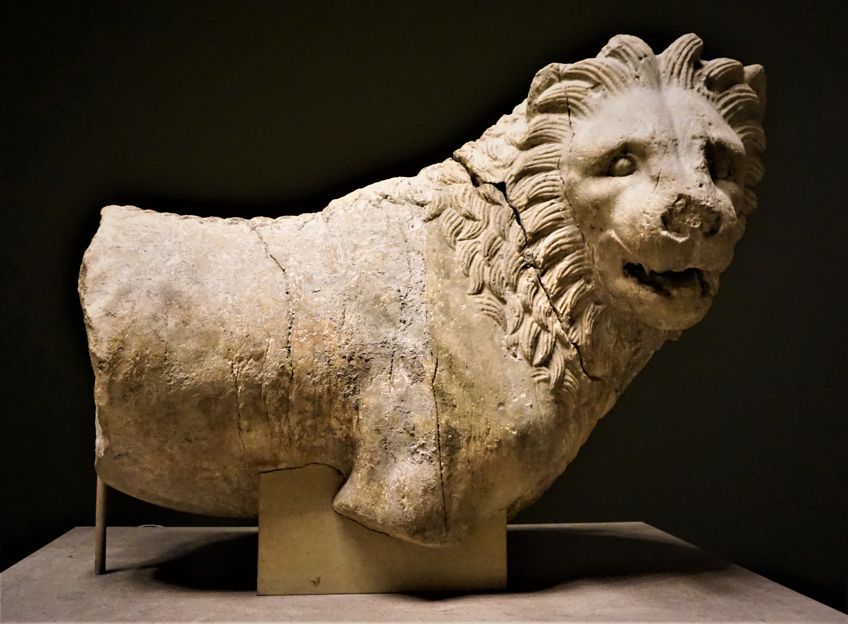
Some of these statues are no longer extant or have only been discovered in pieces. Only historical records exist for a few of the sculptures’ initial locations. At the summit of the pyramid, the enormous statues of Artemisia and Mausolus were seated in the chariot. The corners of the sub-platform are where the dismounted equestrian groups are positioned. The two gables’ acroteria, which may have symbolized the six Carian villages located in Halicarnassus, may have included the semi-colossal female heads. Groups are still working today as they explore and study the Mausoleum at Halicarnassus’ statues.
Later History of the Tomb of Mausolus
For many years, the Mausoleum provided a view of Halicarnassus. It was unharmed when the capital was conquered by Alexander the Great in 334 BCE and remained so following pirate invasions in 62 and 58 BCE. It was situated above the ruins of the city for around 16 centuries. The columns were later destroyed by a succession of earthquakes, which also caused the bronze chariot to collapse to the ground. By 1404 CE, just the Mausoleum’s foundation remained visible. The region was conquered by the Knights of St John of Rhodes, who erected Bodrum Castle.
When they wanted to strengthen it in 1494, they utilized the Mausoleum’s stones. Around this time, “inventive reconstructions” of the Tomb began to surface.
Rumors of a Turkish attack prompted the Crusaders to fortify the stronghold at Halicarnassus and a significant amount of the tomb’s surviving pieces were broken up and utilized in the castle walls. There are still polished marble fragments from the tomb there today. The base of the knights on the island of Rhodes was taken over by Suleiman the Magnificent; they eventually transferred, first temporarily to Sicily and then officially to Malta, surrendering the Castle to the Ottoman Empire.
A group of knights penetrated the monument’s foundation as part of the fortification construction and found a chamber with a large casket within. The following account of what transpired is told in numerous histories of the Mausoleum: the group decided it was too late to open it that day and came the following morning to discover the tomb and whatever riches it may have held looted. Additionally missing were Artemisia and Mausolus’ corpses. The tale is depicted in a tiny museum building near the Mausoleum site.
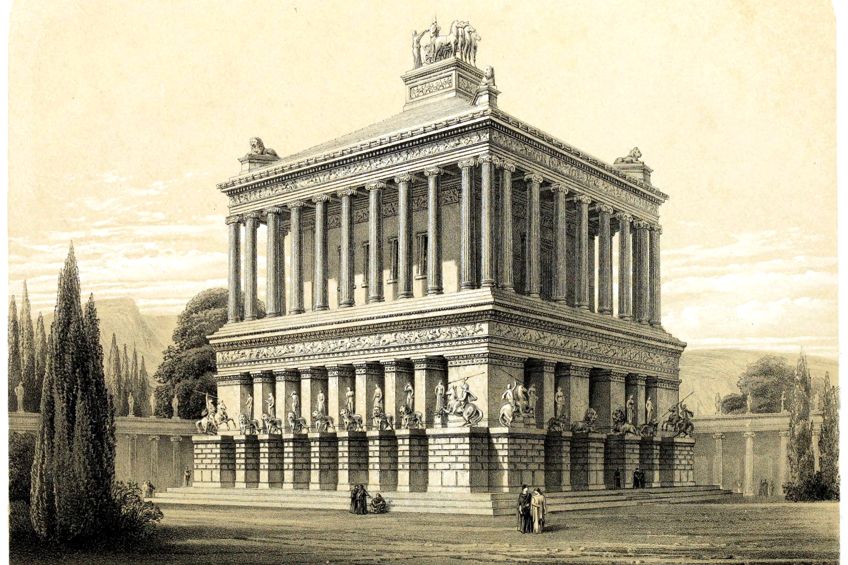
Archeologists discovered in the 1960s that tomb robbers had excavated a tunnel beneath the grave chamber and stolen its contents long before the knights arrived. According to the museum, Artemisia and Mausolus were most likely cremated, therefore only an urn with their ashes was put in the tomb chamber. This helps to explain why no bodies were discovered. The Knights took many of the finer works from the Mausoleum and installed them in the Bodrum fortress before crushing and burning most of the surviving art into lime for plaster. They remained for 300 years.
Rediscovery and Excavation
A number of the sculptures from Bodrum Castle were purchased by a British consul in the 19th century and are currently housed in the British Museum. In 1852, Charles Thomas Newton, an archaeologist, was sent by the British Museum to look for more Mausoleum remains. He faced an enormous challenge. He had no idea where the tomb was, and the cost of purchasing all the little parcels of property in the region to seek it would have been prohibitively expensive. Instead, Newton researched the writings of ancient writers such as Pliny the Elder to determine the estimated size and position of the memorial and then purchased a parcel of land in the most plausible place.
Newton excavated tunnels beneath the neighboring plots to examine the surrounding environment as he delved down.
He was able to discover several walls, a stairway, and three of the foundation’s corners. Newton was able to identify the pieces of land he was required to buy using this information. Newton then dug the site and discovered fragments of the reliefs that adorned the building’s walls as well as sections of the stepped roof. A shattered stone chariot wheel 2 meters in diameter was also uncovered, which originated from the artwork on the Mausoleum’s ceiling. Finally, he discovered the sculptures of Artemisia and Mausolus that were placed at the building’s apex.
Newton transported slabs of marble from this location by HMS Supply and placed them in Malta in October 1857. These blocks were used in the building of a new Royal Navy port in Malta. Nowadays, this dock is known as Dock No. 1 in Cospicua, although the building blocks are buried in Dockyard Creek, concealed from view. Aarhus University in Denmark’s Prof. Kristian Jeppesen conducted an extensive study on the Mausoleum from 1966 to 1977. The Maussolleion at Halikarnassos is a six-volume monograph written by him. The Mausoleum’s grandeur was not only in the building itself, but also in the ornaments and sculptures that graced the exterior at various heights on the platform and the roof: statues of humans, horses, lions, and other animals in diverse scales.
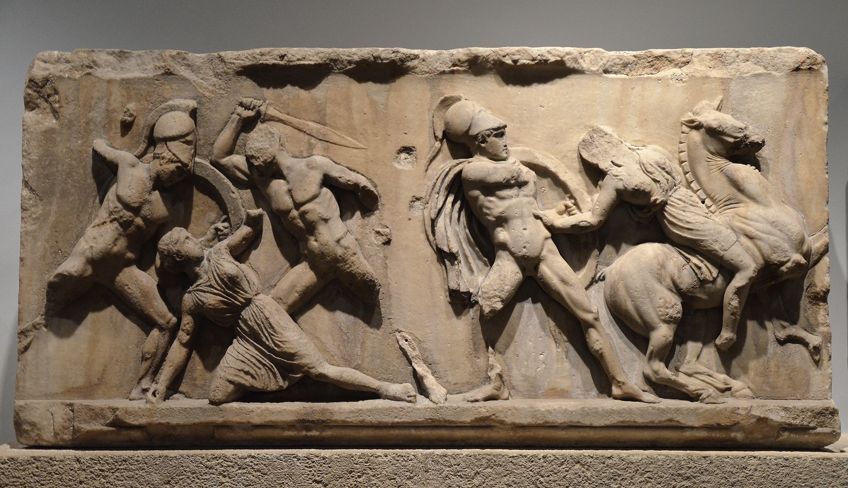
Because the figures were of humans and animals, the Mausoleum is unique in history because it was not devoted to Ancient Greek gods. The huge Knights Hospitaller fortress still exists in Bodrum today, and the polished marble and stone slabs of the Mausoleum may be seen carved into the structure’s walls. Only the foundations and a tiny museum exist at the site. The British Museum’s collection of surviving sculptures includes statue pieces and several slabs of the frieze depicting the war between the Amazons and the Greeks. Images of Mausolus and his bride guard the shattered remnants of the lovely mausoleum she made for him.
The Mausoleum at Halicarnassus was a large monument erected in 350 BCE for Mausolus, the monarch of Caria. The marble edifice was so massive and ornately carved with statues that it was named one of the Seven Wonders of the Ancient World and gave its title to any enormous burial monument – a mausoleum. The Tomb of Mausolus no longer exists as a result of a severe earthquake and numerous pieces were repurposed for the 15th century CE Bodrum Castle. Some podium and column parts remain, and significant elements of the Mausoleum’s ornamental sculpture may now be displayed at the British Museum in London.
Frequently Asked Questions
Where Was the Mausoleum at Halicarnassus Built?
Halicarnassus was once an ancient Greek city in Anatolia’s Caria. It was situated in southwest Caria, in a strategic location on the Gulf of Gökova, which is today in Bodrum, Turkey. The city was famed for the Mausoleum. The tomb, constructed between 353 and 350 BCE, was one of the seven wonders of the ancient world. The history of Halicarnassus was notable for two interconnected reasons. At a period when most other Greek cities had long since gotten rid of their monarchs, Halicarnassus preserved a monarchical style of administration. Second, although its Ionian neighbors revolted against Persian control, Halicarnassus stayed loyal to the Persians and was part of the Persian Empire until it was taken by Alexander the Great during the invasion of Halicarnassus in 333 BCE.
What Was the Mausoleum at Halicarnassus Built For?
Mausolus was a Persian satrap who reigned semi-independently in Caria in present southwest Turkey, with Halicarnassus as his headquarters. Caria thrived as a result of Mausolus’ control and expansion of coastal cities, which allowed them to better capitalize on eastern Mediterranean commerce. The amassed wealth in Caria’s royal treasury would be used on one of the most extravagant personal construction projects ever witnessed in the ancient world. When Mausolus passed in 353 BCE, his body was interred in the Mausoleum at Halicarnassus. The tomb, which had been planned by the monarch for himself and his family since around 367 CE, was completed by his sister-wife Artemisia. It was likely finished about 350 BCE, despite the fact that Artemisia died the year before; she would’ve been buried with her husband and succeeding generations of their line.
Justin van Huyssteen is a freelance writer, novelist, and academic originally from Cape Town, South Africa. At present, he has a bachelor’s degree in English and literary theory and an honor’s degree in literary theory. He is currently working towards his master’s degree in literary theory with a focus on animal studies, critical theory, and semiotics within literature. As a novelist and freelancer, he often writes under the pen name L.C. Lupus.
Justin’s preferred literary movements include modern and postmodern literature with literary fiction and genre fiction like sci-fi, post-apocalyptic, and horror being of particular interest. His academia extends to his interest in prose and narratology. He enjoys analyzing a variety of mediums through a literary lens, such as graphic novels, film, and video games.
Justin is working for artincontext.org as an author and content writer since 2022. He is responsible for all blog posts about architecture, literature and poetry.
Learn more about Justin van Huyssteen and the Art in Context Team.
Cite this Article
Justin, van Huyssteen, “Mausoleum at Halicarnassus – The History of the Tomb of Mausolus.” Art in Context. January 11, 2023. URL: https://artincontext.org/mausoleum-at-halicarnassus/
van Huyssteen, J. (2023, 11 January). Mausoleum at Halicarnassus – The History of the Tomb of Mausolus. Art in Context. https://artincontext.org/mausoleum-at-halicarnassus/
van Huyssteen, Justin. “Mausoleum at Halicarnassus – The History of the Tomb of Mausolus.” Art in Context, January 11, 2023. https://artincontext.org/mausoleum-at-halicarnassus/.





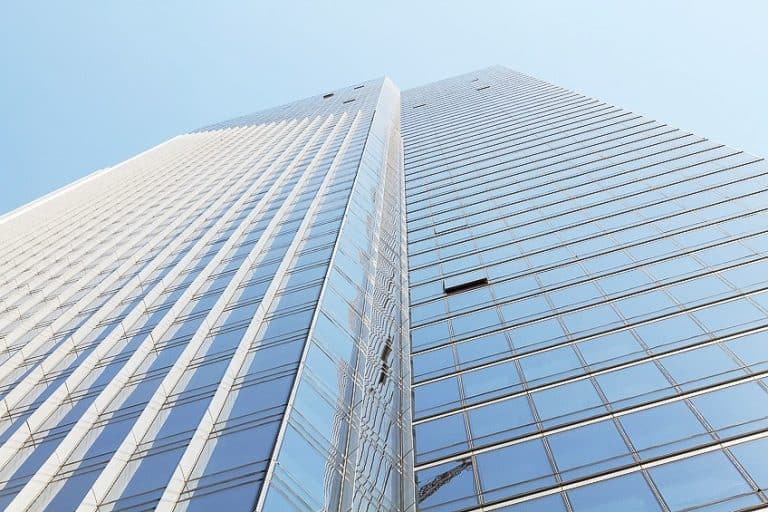



Thanks for sharing this insightful information